 Weird Stuff
Weird Stuff  Weird Stuff
Weird Stuff  Mysteries
Mysteries 10 Tragic Disappearances and Deaths in Joshua Tree National Park
 History
History 10 Ways Childhood Really Sucked in the Old West
 Music
Music 10 Name Origins of Famous Bands from the 1990s
 Religion
Religion 10 Biggest Turnarounds by the Catholic Church
 Weird Stuff
Weird Stuff 10 Unbelievable Times Laws Had Unintended Consequences
 Humans
Humans Ten Historic Women Who Deserve Way More Credit Than They Got
 Movies and TV
Movies and TV 10 Films That Spawned Major Lawsuits
 History
History Ten Times Towns Were Wiped Off the Face of the Earth
 Creepy
Creepy 10 of the Most Disturbingly Haunted Public Houses in the UK
 Weird Stuff
Weird Stuff 10 Niche Subcultures That Are More Popular Than You Might Think
 Mysteries
Mysteries 10 Tragic Disappearances and Deaths in Joshua Tree National Park
 History
History 10 Ways Childhood Really Sucked in the Old West
Who's Behind Listverse?

Jamie Frater
Head Editor
Jamie founded Listverse due to an insatiable desire to share fascinating, obscure, and bizarre facts. He has been a guest speaker on numerous national radio and television stations and is a five time published author.
More About Us Music
Music 10 Name Origins of Famous Bands from the 1990s
 Religion
Religion 10 Biggest Turnarounds by the Catholic Church
 Weird Stuff
Weird Stuff 10 Unbelievable Times Laws Had Unintended Consequences
 Humans
Humans Ten Historic Women Who Deserve Way More Credit Than They Got
 Movies and TV
Movies and TV 10 Films That Spawned Major Lawsuits
 History
History Ten Times Towns Were Wiped Off the Face of the Earth
 Creepy
Creepy 10 of the Most Disturbingly Haunted Public Houses in the UK
10 Species Humanity Saved From Extinction
Humans are good at a lot of things when you think about it. We can build bridges, write books, and read interesting articles on the Internet. Sadly, it seems one of our greatest achievements is the ability to kill off vast quantities of plants and animals. We have pushed whole species to extinction, but on occasion, we have been able to bring some back from the brink.
Granted, it’s rare, but thanks to conservation efforts, captive breeding programs, and legislation protecting our environment, we have been able to stave off extinction for some of our animal friends. Here are ten we pushed to the brink of extinction but kept from going over the edge . . . for now.
10 Panamanian Golden Frog
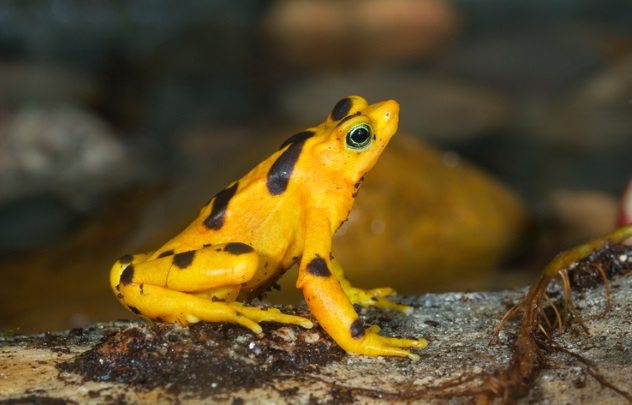
These small, golden-colored toads are endemic to the mountain streams of West-Central Panama and are listed as critically endangered by the International Union for Conservation of Nature (IUCN).[1] The Panamanian golden frog has been threatened for decades thanks to deforestation, overcollection, water pollution, and a loss of habitat, but its true enemy is far nastier than anything humans have done to them. Chytridiomycosis, otherwise known as amphibian chytrid fungus disease, spread across South and Central America with the sad result of gravely threatening nearly a third of all amphibian species.
The epidemic is so bad that it has been described by scientists as “the worst infectious disease ever recorded among vertebrates in terms of the number of species impacted.” As the Panamanian golden frogs started dying off in the wild in 2006, conservationists began scooping them up and placing them into specially designed breeding programs, which had been established prior to the spread of the disease. The toads may be extinct in their natural habitat (for now), but the success of these ongoing programs may allow scientists to one day return them to their native habitat and keep them hopping through the streams of Panama.
9 Bellinger River Snapping Turtle
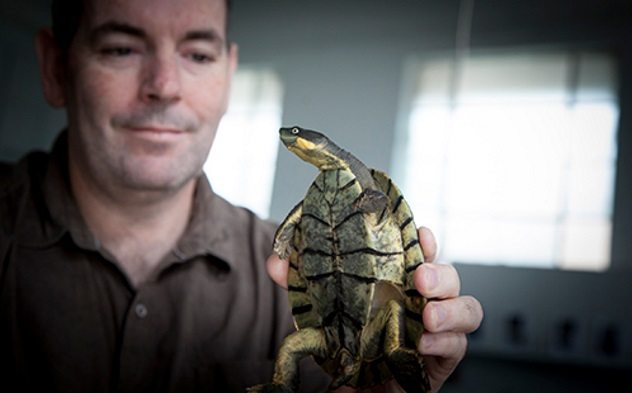
The Bellinger River snapping turtle is endemic to the very small range of a 60-kilometer (37 mi) stretch of the Bellinger River in New South Wales, where it was once plentiful. Their conservation status became threatened when humans introduced the European fox, which enjoys eating them and the Murray River turtle, which began to compete with them for food and breeding sites. While these threats are serious, the main culprit in pushing the Bellinger River snapping turtle to the edge of extinction is a mysterious disease which struck the population in 2015.[2]
Within a span of only two months, huge numbers of the turtle population were wiped out by an unidentified pathogen or toxin, which inflicts a 100-percent mortality rate in infected individuals. With little time on their side, scientists were able to save only 17 uninfected individuals from the Bellinger River. They even called on the public for help in finding uninfected individuals to be taken from their natural habitat so that they might be saved. Thanks to funding provided by the state and the tireless work of conservationists, the turtle has been saved, but more work is needed to build large breeding groups into the wild to help them secure their habitat once more.
8 Golden Lion Tamarin

The golden lion tamarin, more commonly known as the golden marmoset, is a small monkey native to the Atlantic coastal forests of Brazil. The species is listed as endangered thanks to severe habitat destruction. The remaining wild populations are limited to three small areas of the Southeastern Brazilian tropical rain forest, and their population dropped to only 200 individuals by 1981. Conservation efforts went into effect in the 1980s, and thanks to positive human interaction, that number has increased to 3,200, with more on the way.
The golden marmoset’s reintroduction into its native, lost habitat is a rare success story for conservationists. Captive breeding programs helped to build the population to high enough levels, which allowed for them to not only be returned to their native habitat but also to new locations in the Brazilian rain forests. Approximately one third of all individuals in the wild came from captive breeding programs, which are still underway thanks to more than 150 zoos which have participated in the program, though the species remains threatened.[3] Due to its habitat loss, its range is fragmented among only four locations, which limits genetic diversity.
7Eastern Bongo

The bongo is the largest African antelope and consists of two populations in the western lowland and the eastern mountain regions of Central and Western Africa. The western bongo is listed as Near Threatened, while its eastern counterpart is Critically Endangered in the wild. The eastern (or mountain) bongo’s population suffered in the wild thanks to logging operations and poaching. In 2000, the bongo was added to the Species Survival Plan, and within only six years, it looked to be making a comeback. Unfortunately, by 2013, the successes made in returning the eastern bongo to the wild were negated by human activity, resulting in the near-destruction of these animals in the wild.
With only 100 individuals left outside of captivity, special breeding programs were put into place to try and return the mountain bongo to less threatened levels. Presently, there are more mountain bongos living in captivity than there are in the wild. We have held off extinction for now, but more needs to be done to ensure the captive-bred bongos placed into their natural habitat are able to survive and thrive.[4]
6 California Condor
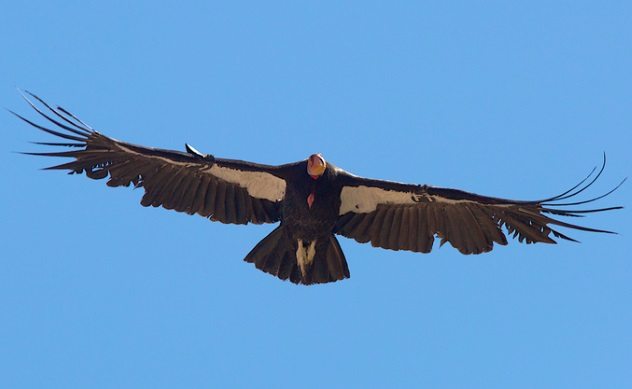
The California condor is one of the longest-living bird species in the world, with an average life span of around 60 years. Its longevity failed to keep the California condor from skirting extinction when, in 1987, they became extinct in the wild. Their extinction in the wild came when the only remaining individuals were captured by scientists with the goal of rebuilding their population. At the time, there were only 27 individuals left in existence, but thanks to conservation efforts at the San Diego Wild Animal Park and the Los Angeles Zoo, they were successfully reintroduced to the wild by the mid-1990s.
They were initially threatened due to lead poisoning, habitat destruction, and poaching, but laws and regulations have since been put into place to protect and preserve the remaining population. The reintroduction of the California condor is one of the most successful conservation efforts ever made. The birds remain Critically Endangered, but by 2016, there were 446 individuals living in the wild and in captivity. This makes the California condor one of the rarest species of bird, but one that survived extinction.[5]
5 Arabian Oryx
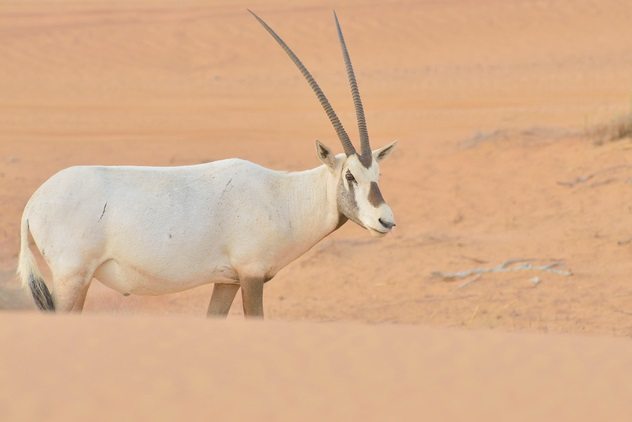
The Arabian oryx, often called the Arabian unicorn, was listed as extinct in the wild by the early 1970s thanks to excessive hunting. Fortunately, there were small populations of the Arabian oryx spread about in zoos across the globe, which pushed conservationists to launch Operation Oryx, with the goal of breeding and reintroducing populations into the wild. The Phoenix Zoo began the project alongside the Fauna and Flora Preservation society of London, with help from the World Wildlife Fund.
Since the project began in the 1960s, the Phoenix Zoo alone has successfully seen more than 240 births, and by 1980, they had enough animals to reintroduce them into the wild. A project that began with few individuals successfully helped reestablish oryx populations in Oman, Saudi Arabia, and Israel, with more than 1,000 new animals, though the wild population is still listed as Vulnerable. Even more impressive, there are between 6,000 and 7,000 animals still held in captivity, making Operation Oryx one of the most successful captive breeding and reintroduction programs ever attempted.[6]
4 Przewalski’s Horse
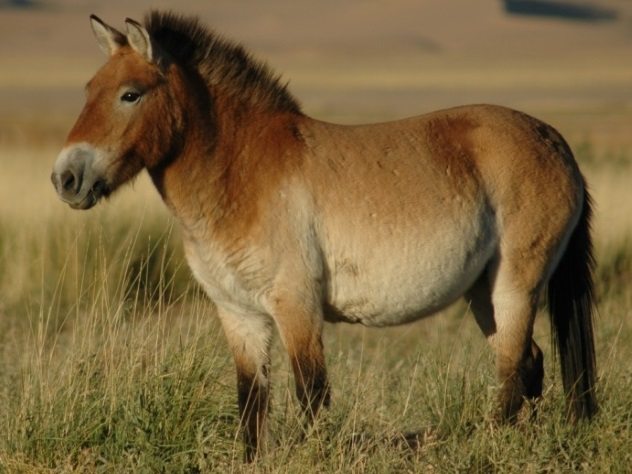
The Przewalski’s horse is rare and currently listed as Endangered, but they were completely extinct in the wild by 1966. All existing individuals are descendants from nine of 31 horses captured in 1945. Those horses were held in captivity, and their progeny were used in a breeding program initiated around the time they went extinct in the wild.
Thanks to the breeding program established by the Zoological Society of London alongside Mongolian scientists intent on bringing the horses back to the wild, those nine horses have helped to reestablish the Przewalski’s horse back into its habitat, with more than 2,000 horses by 2016.[7] A separate population was also introduced into the Chernobyl Exclusion Zone in 1998, with the express purpose of keeping the horses in an area devoid of humans. That population is thought to be increasing in size and may not be negatively affected by lingering radiological concerns.
3 Amur Leopard
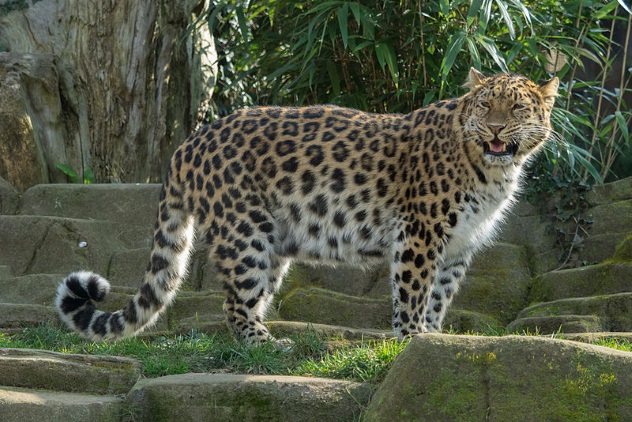
The Amur leopard is the rarest subspecies of leopard on Earth, thanks to the illegal wildlife trade that prizes their pelts, which can go for as much as $1,000 on the black market. They are native to the Primorye region of Southeastern Russia and a small part of China, where they are poached for their fur. The IUCN listed then as Critically Endangered due to their near-extinction in the wild. By 2015, it was estimated that less than 60 individuals remained in Russia and China.
Conservation efforts have been ongoing since 2007 with captive breeding programs, due to the belief that the wild population’s gene pool is so reduced that they are at risk from inbreeding depression. Their survival is further threatened by civilization encroaching on their natural habitat and the poaching of their prey. Captive populations of the Amur leopard have reached levels approaching reintroduction, with 173 recorded in 2011. Since conservation and reintroduction efforts began, the wild population increased to 103 individuals by early 2018.[8] More work is needed, but the Amur leopard has been saved from extinction, if just barely.
2 Bald Eagle
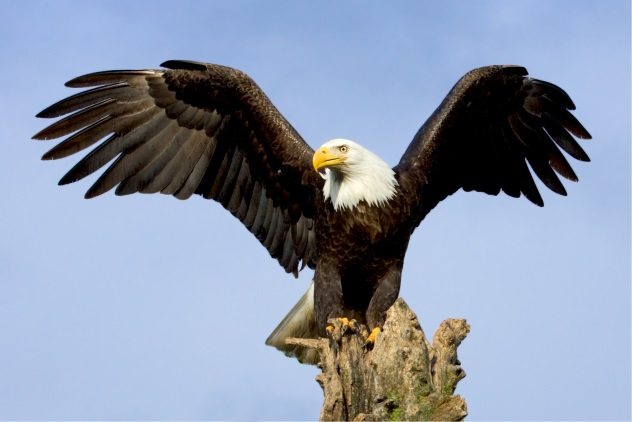
Americans easily recognize this bird of prey as the national bird and national animal of the United States, but many don’t realize it was once on the brink of extirpation. Extirpation does not mean extinction of the entire species but rather extinction in a specific geographic range, such as the United States of America, which wouldn’t sit well with Americans. When the nation was founded, there were hundreds of thousands of nesting pairs of bald eagles, but by the 1950s, that number had dropped to only 412 in the contiguous United States.
The National Wildlife Federation listed hunting as the primary reason for the decline in 1984, with additional blame being placed on DDT, a pesticide, which has since been banned. Conservation efforts were put into place, and by 2006, 9,789 breeding pairs were reported by the US Fish and Wildlife Service.[9] The bald eagle was finally removed the federal government’s list of endangered species in 1995, when it was reclassified from Endangered to Threatened. In 2007, it was completely removed from the List of Endangered and Threatened Wildlife with the new classification of Least Concern by the IUCN.
1 Humpback Whale
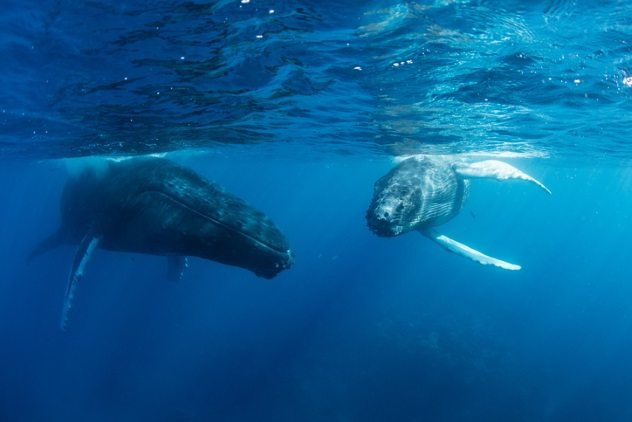
Sometimes, it can be difficult to imagine, but the largest species on the planet are often the ones most threatened with extinction. Like most whale species, the humpback whale was nearly hunted to extinction via the whaling industry. When it became apparent that the whales were nearly gone and would not be able to recover without help, the planet got together and instituted a moratorium on hunting whales in 1966. By this time, more than 90 percent of the total population of humpback whales had been destroyed, leaving as few as 5,000 individuals.[10]
Since 1966, the whales have made an amazing comeback. Unlike the other animals on this list, a captive breeding program isn’t possible for an animal that weighs an average of 36,000 kilograms (79,000 lb). So much of the work that went into preserving the species involved keeping people from killing them. While they still succumb to occasional poaching and often become entangled in fishing gear, the population of humpback whales has increased to an estimated 40,000 individuals, which is significant but only one third of their pre-whaling levels.
Read about more of humanity’s efforts to defy extinction on 10 Things Humans have Saved from Extinction and Top 10 Extinct Animals That Scientists Want To Bring Back.








